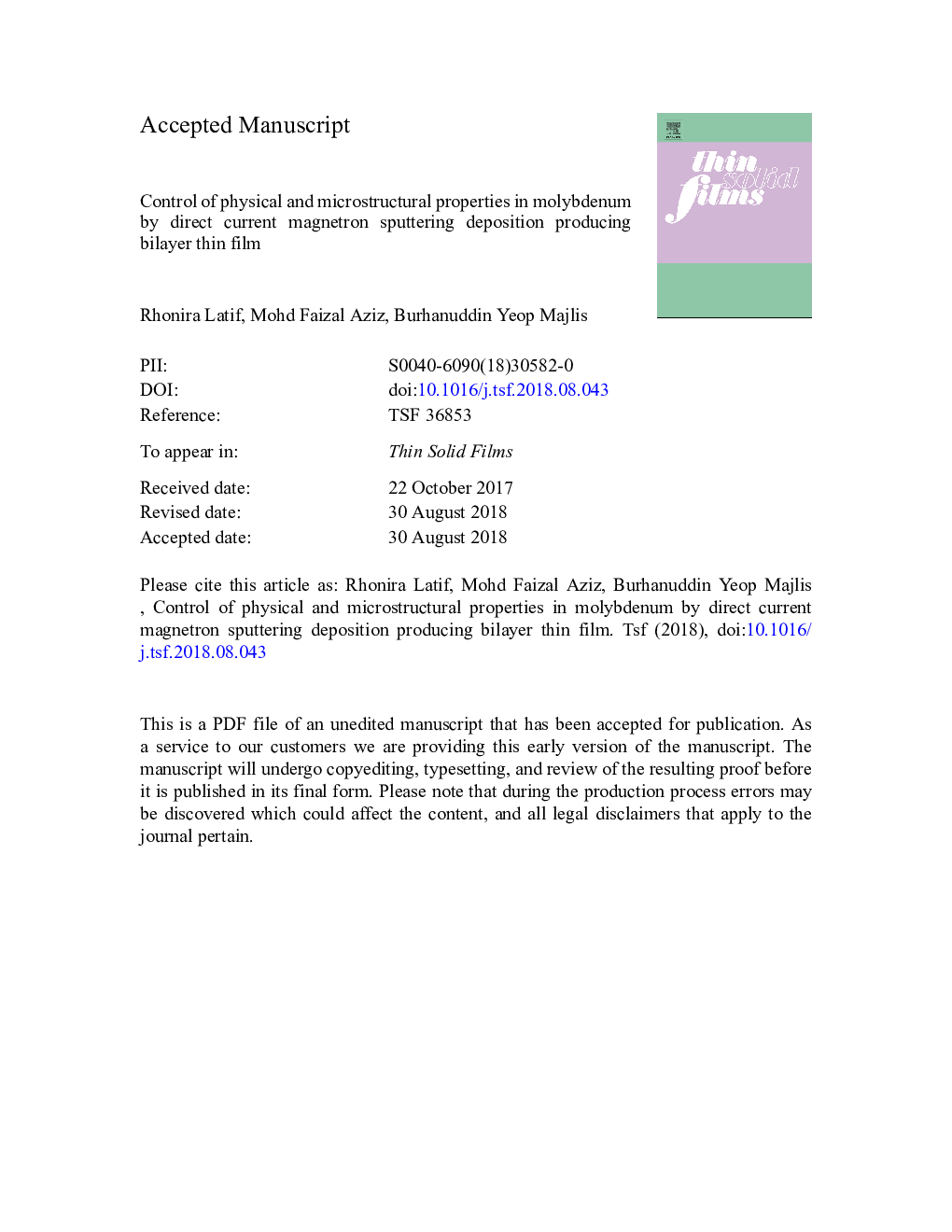| Article ID | Journal | Published Year | Pages | File Type |
|---|---|---|---|---|
| 8961465 | Thin Solid Films | 2018 | 57 Pages |
Abstract
Molybdenum (Mo) thin films are widely used in microelectromechanical systems (MEMS) applications. Mo bilayer deposition by direct current (DC) magnetron sputtering has been proposed in order to attain the desired smooth surface, small in-plane tensile stress and high degree crystallisation of Mo thin film for the fabrication of MEMS actuators and electrodes. The influences of sputtering time (10â¯min-40â¯min) and sputtering DC power (100â¯W-250â¯W) on the physical and microstructural properties of single layer Mo thin film have been evaluated. The optimised sputtering conditions for bottom and top layer of Mo bilayer have been determined and the individual influence of each layer on the resulting Mo bilayer has been discussed. Our studies reveal that the deposition of top Mo layer with small surface roughness but high in-plane tensile stress has reduced the high surface roughness of bottom Mo layer and simultaneously retained the small in-plane tensile stress. Reducing the sputtering time and/or using similar sputtering power for bottom and top layers improved the crystallinity of Mo bilayer along the preferred ã110ã direction. Mo bilayer thin films of total thicknessâ¯<â¯1â¯Î¼m, crystallite size >19â¯nm, surface roughness <2.5â¯nm and in-plane tensile stress <500â¯MPa have been attained.
Keywords
Related Topics
Physical Sciences and Engineering
Materials Science
Nanotechnology
Authors
Rhonira Latif, Mohd Faizal Aziz, Burhanuddin Yeop Majlis,
